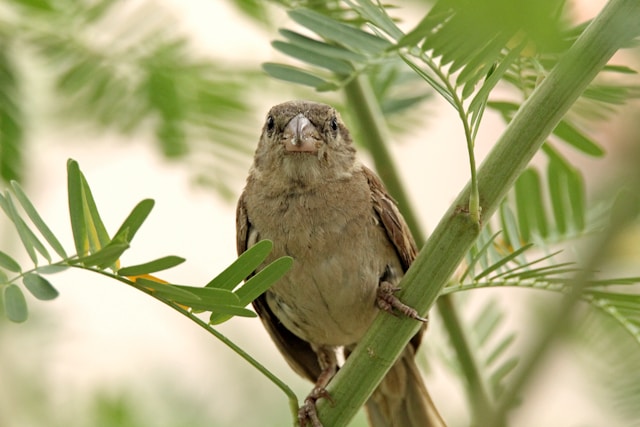Bird conservation has become increasingly crucial as many bird species face threats from habitat loss, climate change, and human activities. One of the most powerful tools in the fight to preserve avian biodiversity is citizen science. This approach leverages the efforts of non-professional volunteers, often ordinary citizens, to collect data and participate in scientific research. By engaging people from all walks of life, citizen science not only gathers valuable information for bird conservation but also raises awareness and fosters a sense of stewardship for the natural world. This article delves into the significant role of citizen science in bird conservation, highlighting its impact, challenges, and success stories.
What is Citizen Science?
Citizen science involves the public in scientific research, enabling non-professional scientists to contribute to data collection, analysis, and reporting. In the context of bird conservation, citizen science projects can include activities such as bird watching, counting bird populations, recording bird songs, and monitoring bird nesting sites. These activities generate large volumes of data that are invaluable for understanding bird behaviors, population trends, and the effects of environmental changes.
The Importance of Citizen Science in Bird Conservation
- Data Collection at Scale: Professional scientists often lack the resources to monitor bird populations across large geographic areas continuously. Citizen scientists help bridge this gap by providing extensive data from diverse locations. This large-scale data collection is essential for tracking migration patterns, population dynamics, and changes in species distribution;
- Early Detection of Problems: Citizen science enables early detection of declines in bird populations or changes in behavior that might indicate broader environmental issues. Early detection allows for timely conservation actions to prevent further declines and mitigate potential threats;
- Public Engagement and Education: Involving the public in bird conservation projects raises awareness about the importance of biodiversity and environmental stewardship. Participants gain a deeper understanding of ecological issues and are more likely to support conservation initiatives;
- Cost-Effective Research: Citizen science is a cost-effective way to conduct extensive research. By utilizing volunteers, conservation organizations can gather vast amounts of data without the need for large financial investments in fieldwork.
Successful Citizen Science Projects in Bird Conservation
- eBird: eBird, a project of the Cornell Lab of Ornithology, is one of the most successful citizen science initiatives. Bird watchers worldwide submit observations to a centralized database, providing researchers with real-time data on bird distribution and abundance. eBird data has been instrumental in numerous scientific studies and conservation efforts, helping identify important bird habitats and track population trends;
- The Great Backyard Bird Count: The Great Backyard Bird Count (GBBC) is an annual event that encourages people to count birds in their local areas and report their findings online. This project, a collaboration between the Cornell Lab of Ornithology and the National Audubon Society, gathers data that helps scientists understand bird populations and migration patterns;
- NestWatch: NestWatch, another initiative by the Cornell Lab of Ornithology, involves volunteers in monitoring bird nests and recording data on nesting success. This information is crucial for studying reproductive behaviors and identifying factors that influence breeding success;
- Birds New Zealand Atlas: In New Zealand, the Birds New Zealand Atlas project engages citizen scientists in documenting bird distribution and abundance across the country. The data collected contributes to the national understanding of bird populations and informs conservation strategies.
Challenges and Solutions in Citizen Science
While citizen science offers many benefits, it also faces challenges:
- Data Quality: Ensuring the accuracy and reliability of data collected by non-professionals can be challenging. To address this, many projects provide training resources, detailed protocols, and validation processes to improve data quality;
- Participant Retention: Keeping volunteers engaged over the long term is crucial for ongoing data collection. Projects that offer feedback, recognize contributions, and create a sense of community among participants tend to have higher retention rates;
- Technological Barriers: Some potential volunteers may face technological barriers, such as a lack of access to digital tools or unfamiliarity with data submission platforms. Providing user-friendly interfaces and technical support can help overcome these barriers;
- Diverse Participation: Ensuring diverse participation in citizen science projects is essential for collecting comprehensive data and promoting inclusivity. Outreach efforts targeting different demographics and communities can help broaden participation.
The Future of Citizen Science in Bird Conservation
The future of citizen science in bird conservation looks promising, with advancements in technology enhancing the capabilities of citizen scientists. Mobile apps, online platforms, and automated data analysis tools make it easier for volunteers to contribute and for researchers to utilize the data. Moreover, the integration of artificial intelligence (AI) and machine learning can help process large datasets, identify patterns, and generate insights more efficiently.
Citizen science will continue to play a pivotal role in bird conservation as more people become aware of the importance of biodiversity and the impact of human activities on wildlife. By fostering a collaborative relationship between professional scientists and the public, citizen science not only advances scientific research but also cultivates a global community dedicated to protecting and preserving bird species for future generations.
Conclusion
Citizen science has emerged as a vital force in bird conservation, harnessing the power of public participation to gather extensive data, detect early signs of ecological issues, and promote environmental awareness. Successful projects like eBird, the Great Backyard Bird Count, NestWatch, and the Birds New Zealand Atlas demonstrate the profound impact that citizen scientists can have on understanding and conserving bird populations. While challenges exist, ongoing efforts to improve data quality, participant retention, and technological accessibility are paving the way for a bright future in citizen science. As technology continues to evolve and more people engage in conservation efforts, the collective impact of citizen science will undoubtedly contribute significantly to the preservation of the world’s avian diversity.
